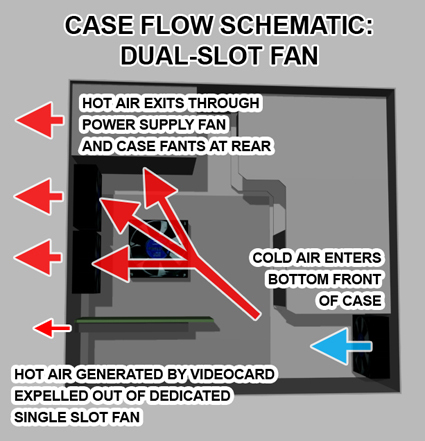Graphics Card Quiet: Gigabyte's Silent-Pipe II Cooling
What Is Silent Pipe II Technology?
One of the inherent problems of cooling any video card - silent or otherwise - is that the PC tower case is designed to move air from the bottom front of the case, to the top rear of the case. While this works well for most of the system, video cards are all designed with the graphics processor on the bottom of the PCB. Because heat rises, this results in the heat being trapped on the bottom side of the video card, unable to efficiently travel out of the top rear of the case. Traditional fanless solutions are limited in their effectiveness because of this limitation.
Many new video card coolers now use up two slots, and blow air directly out of the back of the PC case. While this works well and prevents the case from absorbing heat, it can be a loud option.
Gigabyte's Silent-Pipe II cooler offers a unique solution to this dilemma. Similar to coolers with a dual-slot fan, the Silent-Pipe II uses the adjacent slot for air-flow. However, as there is no fan, convection caused by the heat pulls colder air into the case, past the bottom of the video card. This cools the bottom of the video card and moves the heated air into the case where it can pass the card and be pulled upward and outward by the case fans.
Also of note, the Silent-Pipe II cools both sides of the video card, and thus doesn't ignore the top side of the card like many coolers do. However, the Silent-Pipe II does not offer memory cooling of any kind. This may limit memory overclocking as we describe below.
So, all this theory is wonderful, but how does the Silent-Pipe II keep a video card cool under real-world stresses compared to a regular solution?
Get Tom's Hardware's best news and in-depth reviews, straight to your inbox.
Current page: What Is Silent Pipe II Technology?
Prev Page Gigabyte's Silent Graphics Gear Next Page The Gigabyte NX76T: 7600 GT With Silent-Pipe II TechnologyDon Woligroski was a former senior hardware editor for Tom's Hardware. He has covered a wide range of PC hardware topics, including CPUs, GPUs, system building, and emerging technologies.


